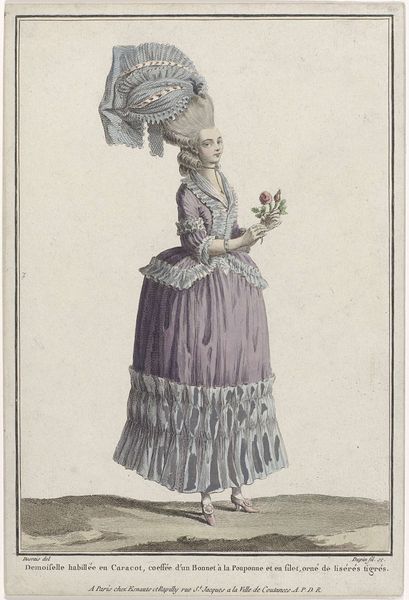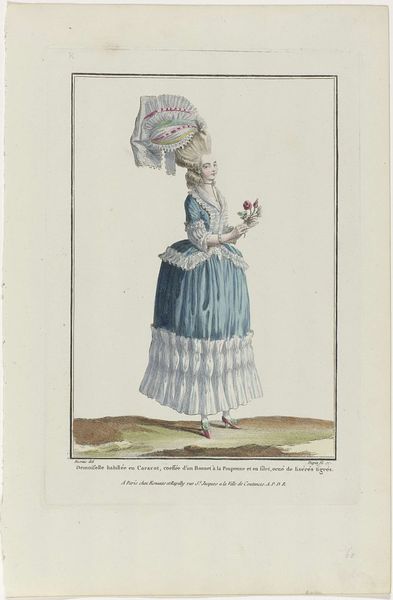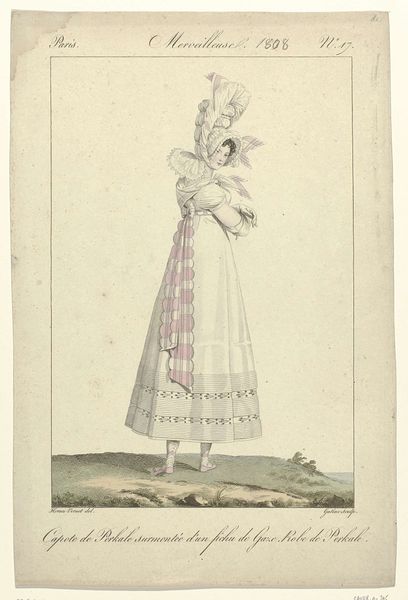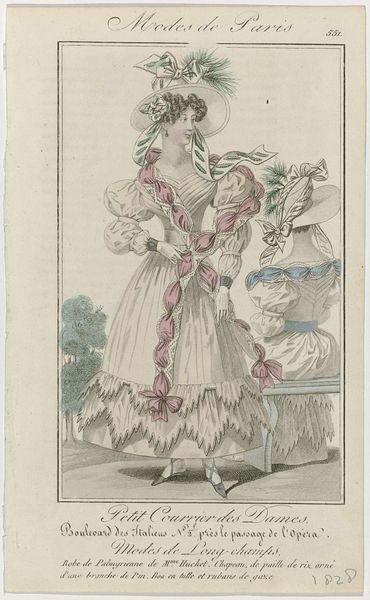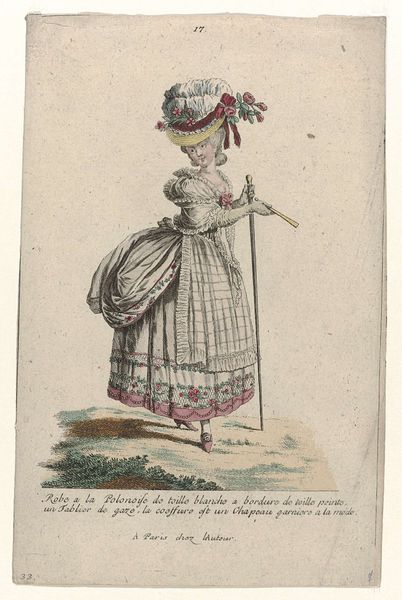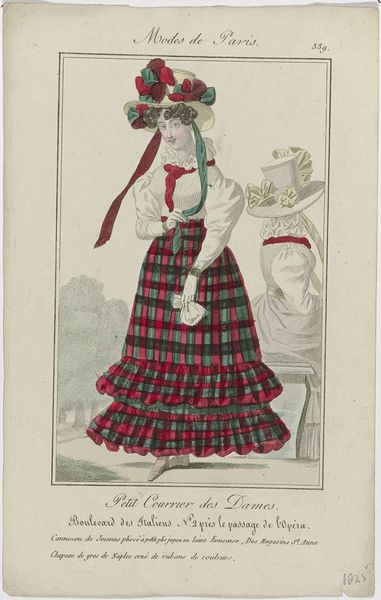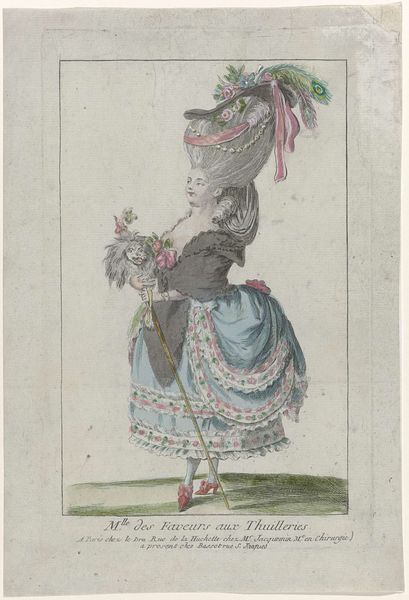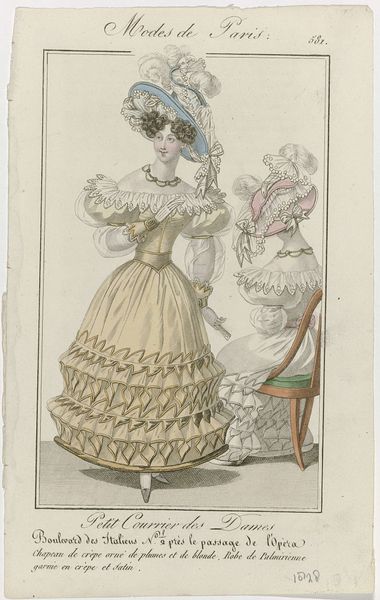
Dimensions: height 291 mm, width 208 mm
Copyright: Rijks Museum: Open Domain
This print by Nicolas Dupin, circa 1785, showcases a fashionable lady adorned with an extravagant hat, large dress, and muff. The profusion of flowers and feathers, symbols of luxury and fleeting beauty, speak to the era's obsession with ornamentation. Observe how the floral motif here mirrors the same symbolic weight carried by garlands in ancient Roman art, representing not only beauty but also ephemerality. Like Botticelli’s Venus emerging from the sea, the figure here conveys a sense of rebirth and renewal, echoing classical ideals of beauty and grace. The dramatic silhouette is not merely fashion, but a psychological statement – a bold expression of identity and status. Such displays engage viewers on a subconscious level, tapping into primal desires for recognition and admiration. Consider how these symbols continue to resurface, evolving and adapting to reflect new cultural values. The cyclical progression of motifs reveals the enduring power of images.
Comments
rijksmuseum about 2 years ago
⋮
In 1778 two young publishers tapped a previously undiscovered market with the launch of a series entitled Gallerie des Modes, which responded to the growing demand among Parisians for fashion news. Initially featuring only hairstyles, the series’ illustrations were later extended to include complete outfits to cater to its audience. These showed figures from head to toe. All ranks of French society were represented in a wide variety of fashionable clothes, from the simple negligée 1 to the robe à la polonaise 2 3, the robe à l’anglaise 4 and the occasional smart gentleman’s suit.
Join the conversation
Join millions of artists and users on Artera today and experience the ultimate creative platform.

